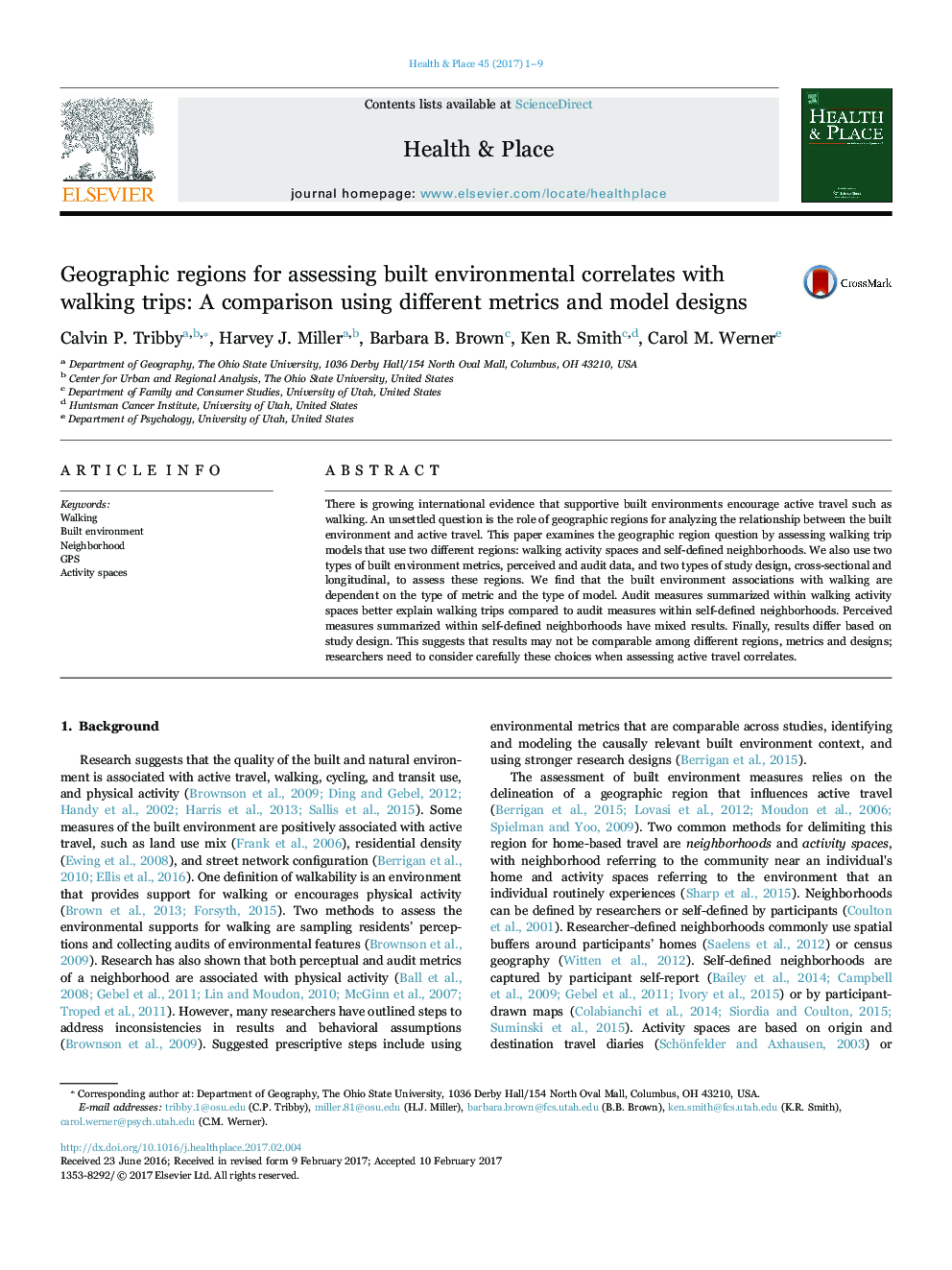| Article ID | Journal | Published Year | Pages | File Type |
|---|---|---|---|---|
| 5114788 | Health & Place | 2017 | 9 Pages |
Abstract
There is growing international evidence that supportive built environments encourage active travel such as walking. An unsettled question is the role of geographic regions for analyzing the relationship between the built environment and active travel. This paper examines the geographic region question by assessing walking trip models that use two different regions: walking activity spaces and self-defined neighborhoods. We also use two types of built environment metrics, perceived and audit data, and two types of study design, cross-sectional and longitudinal, to assess these regions. We find that the built environment associations with walking are dependent on the type of metric and the type of model. Audit measures summarized within walking activity spaces better explain walking trips compared to audit measures within self-defined neighborhoods. Perceived measures summarized within self-defined neighborhoods have mixed results. Finally, results differ based on study design. This suggests that results may not be comparable among different regions, metrics and designs; researchers need to consider carefully these choices when assessing active travel correlates.
Related Topics
Health Sciences
Medicine and Dentistry
Public Health and Health Policy
Authors
Calvin P. Tribby, Harvey J. Miller, Barbara B. Brown, Ken R. Smith, Carol M. Werner,
